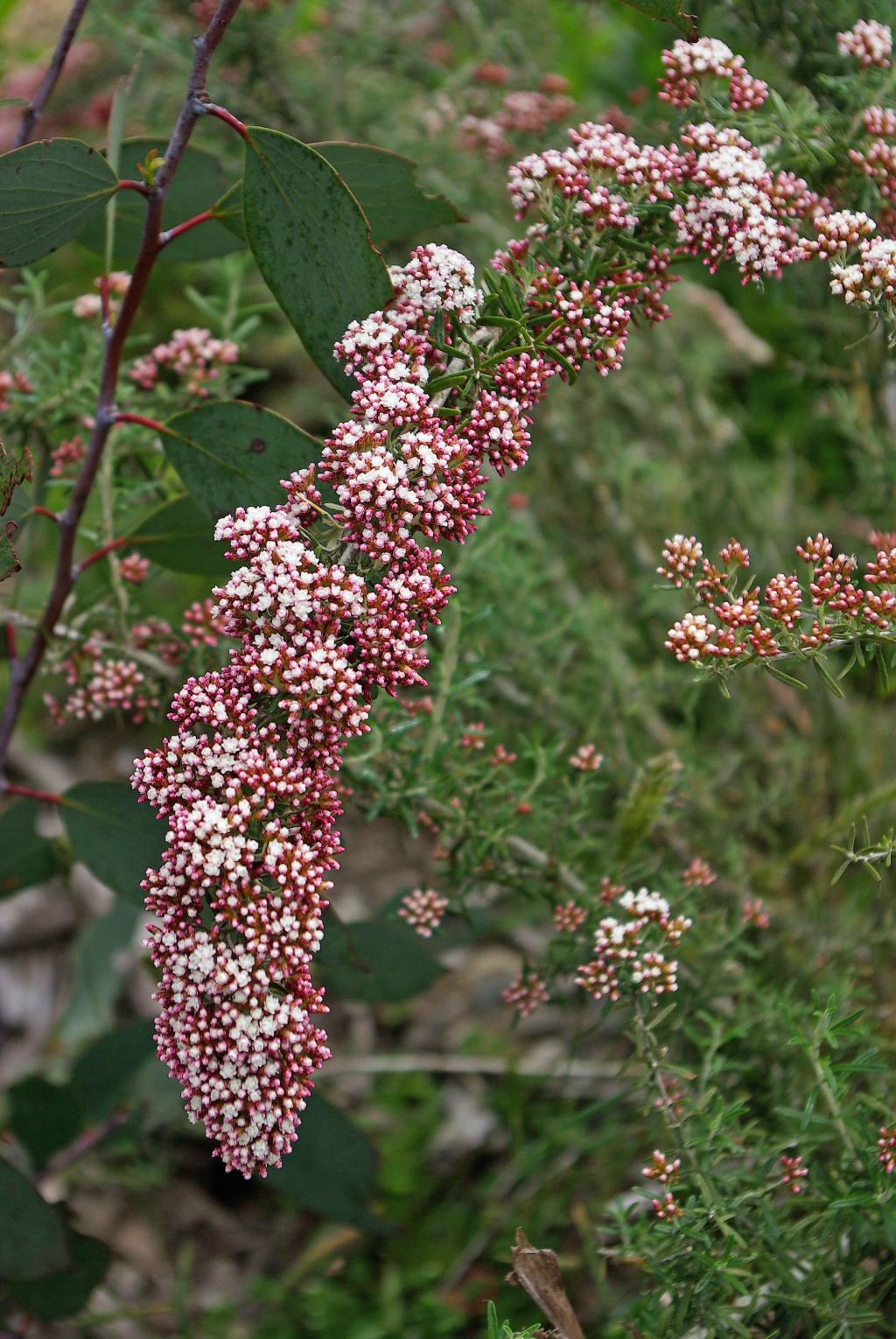Ozothamnus secundiflorus
(N.A.Wakef.) C.Jeffrey Cascade EverlastingSpreading shrub to 2 m high; branchlets densely cottony, not viscid. Leaves spreading, c. oblong, 10–25(–35) mm long, 1.5–3.5 mm wide, sparsely cottony to glabrescent above, densely white-cottony beneath, apex obtuse to acute, margin recurved; petioles 1–3 mm long. Inflorescences hemispherical, c. 2–3 cm diam., but crowded and secund along branches. Capitula 20–45, dull-yellow to brown below, turbinate, 4–5 mm long, c. 2 mm wide; involucral bracts 15–25, innermost spathulate, with lamina obovate, c. 2 mm long, suberect to spreading, flat to plicate, white, margin entire to irregular; receptacle bracts absent or 1; female florets 2–5; hermaphrodite florets 7–13. Cypsela pyriform, c. 1.3 mm long, sparsely papillose; pappus bristles 2.5–3.5 mm long, apex clavate. Flowers Dec.–Jan.
GipP, EGU, HSF, HNF, MonT, HFE, VAlp. Also NSW, ACT. Occurs in dryish alpine heaths and Snow Gum woodlands, particularly amongst rocks, east from Lake Mountain. Locally dominant (e.g. on the Baw Baw Plateau).
Puttock, C.F. (1999). Ozothamnus. In: Walsh, N.G.; Entwisle, T.J., Flora of Victoria Vol. 4, Cornaceae to Asteraceae, pp. 732–742. Inkata Press, Melbourne.
 Spinning
Spinning
